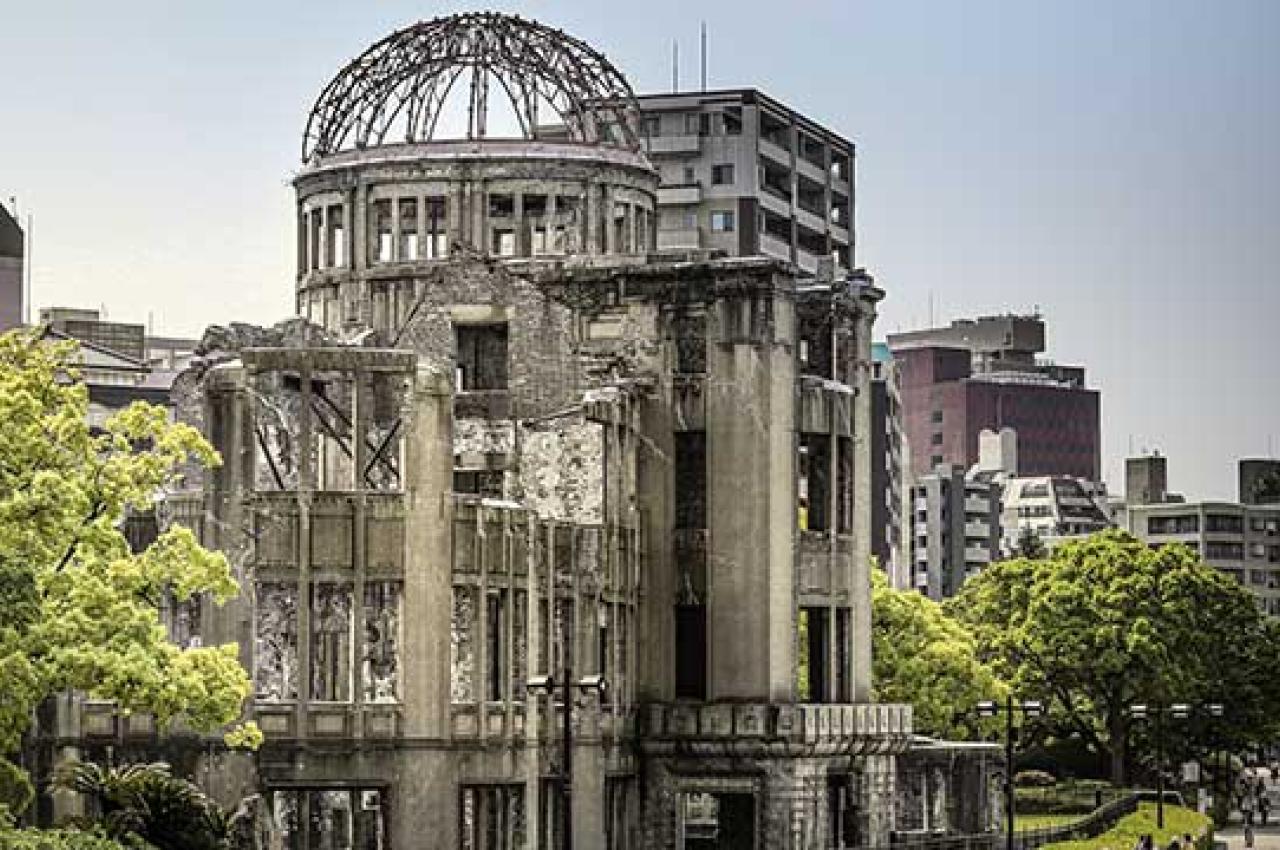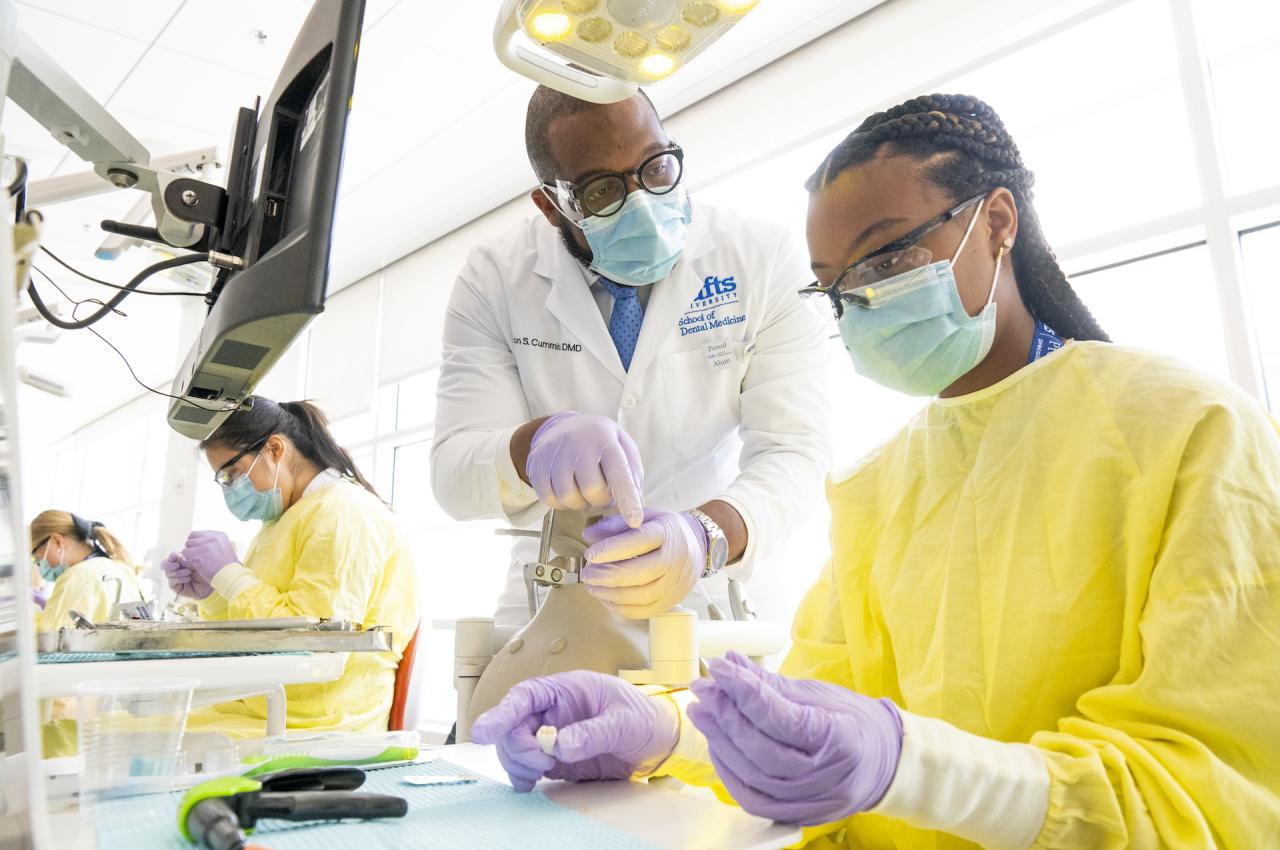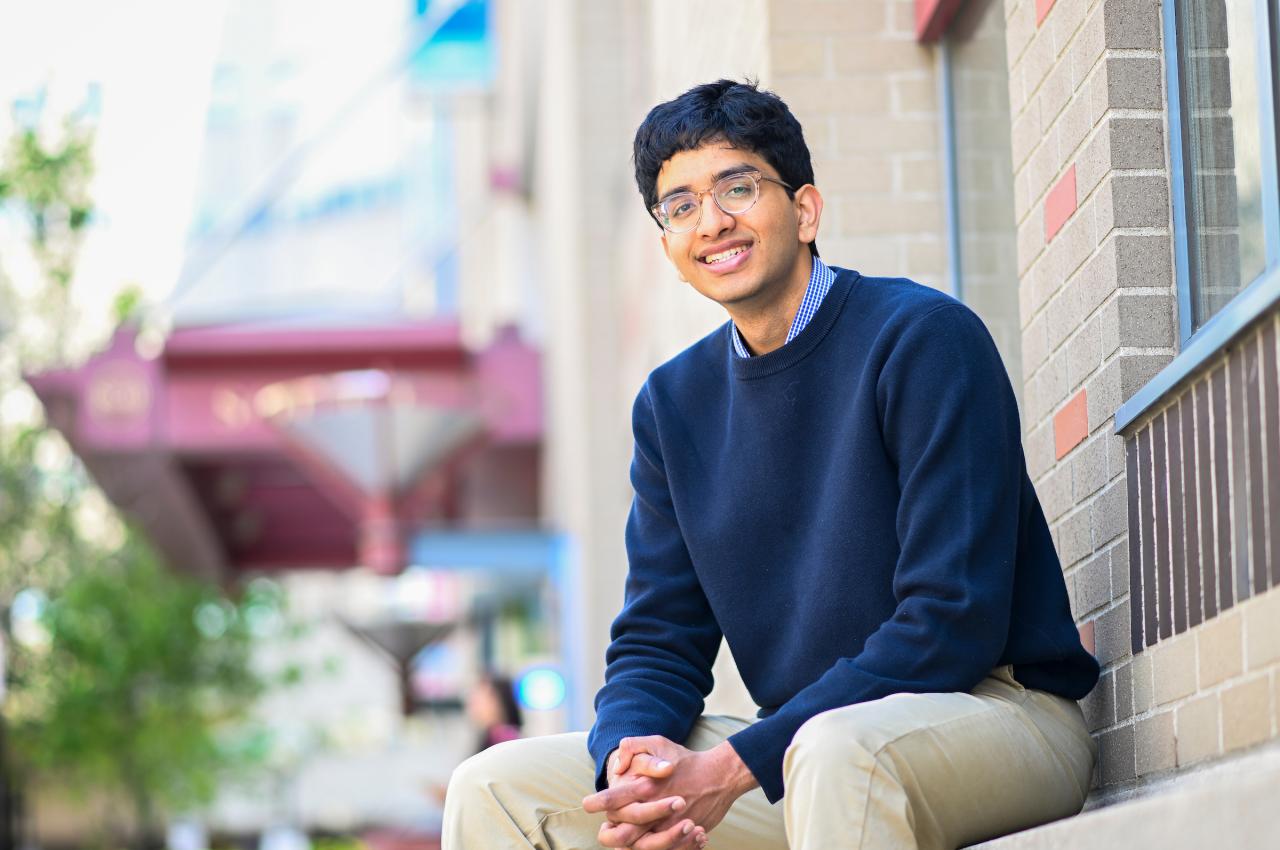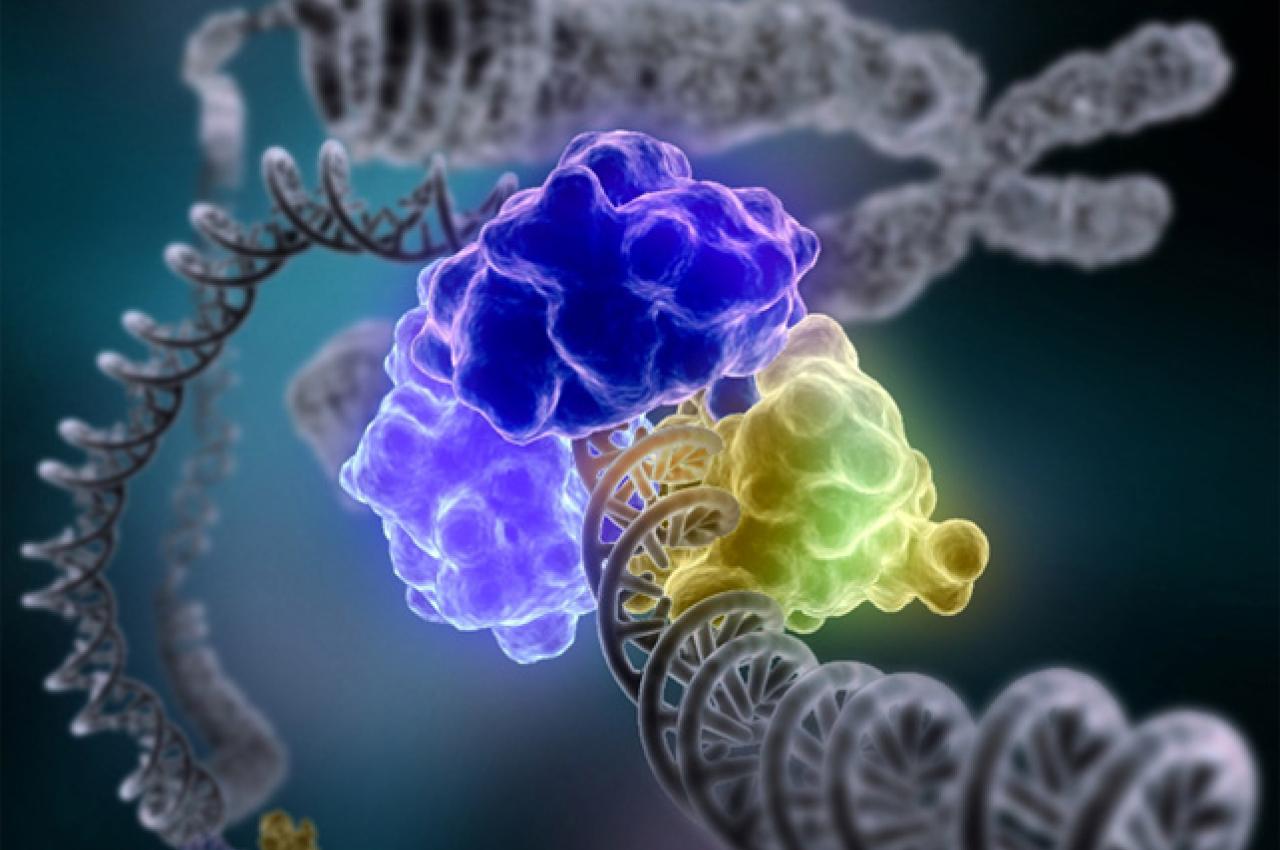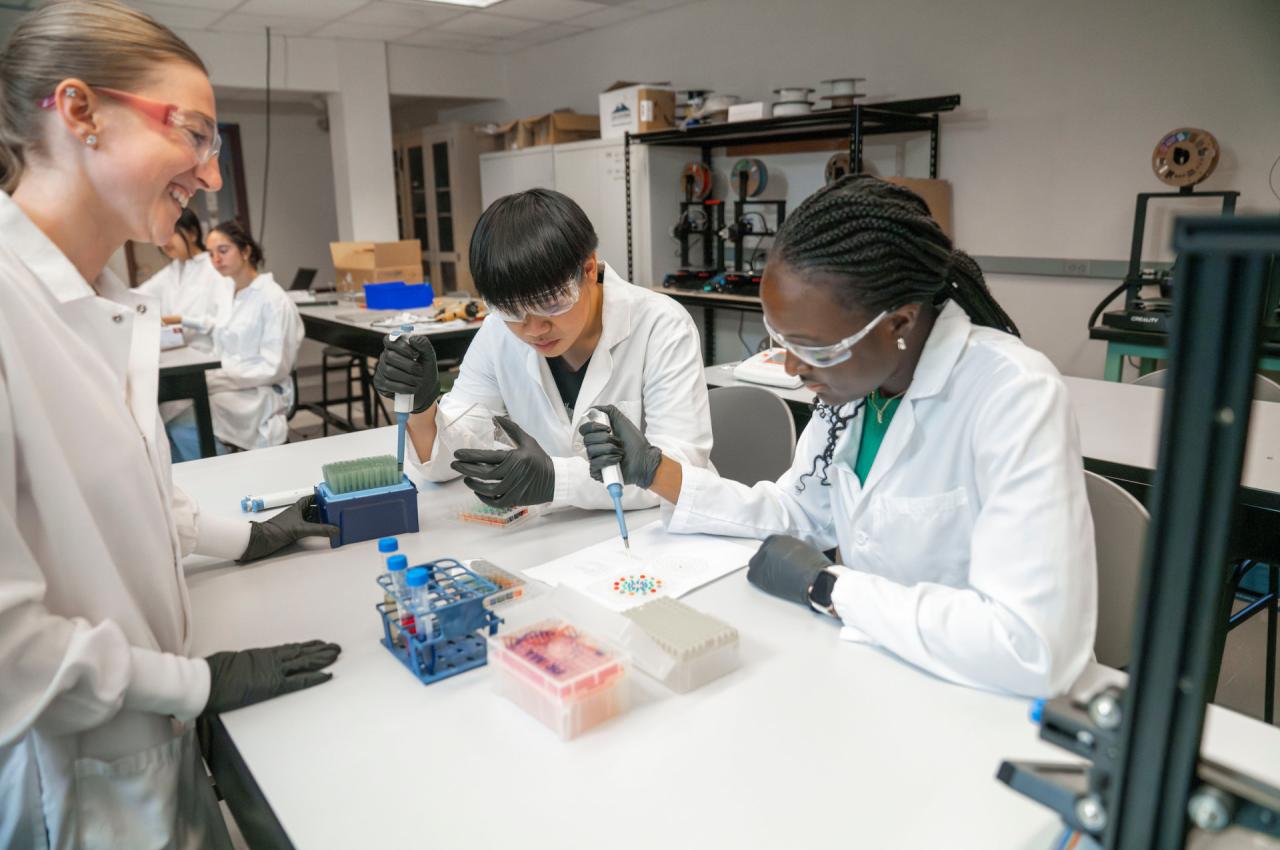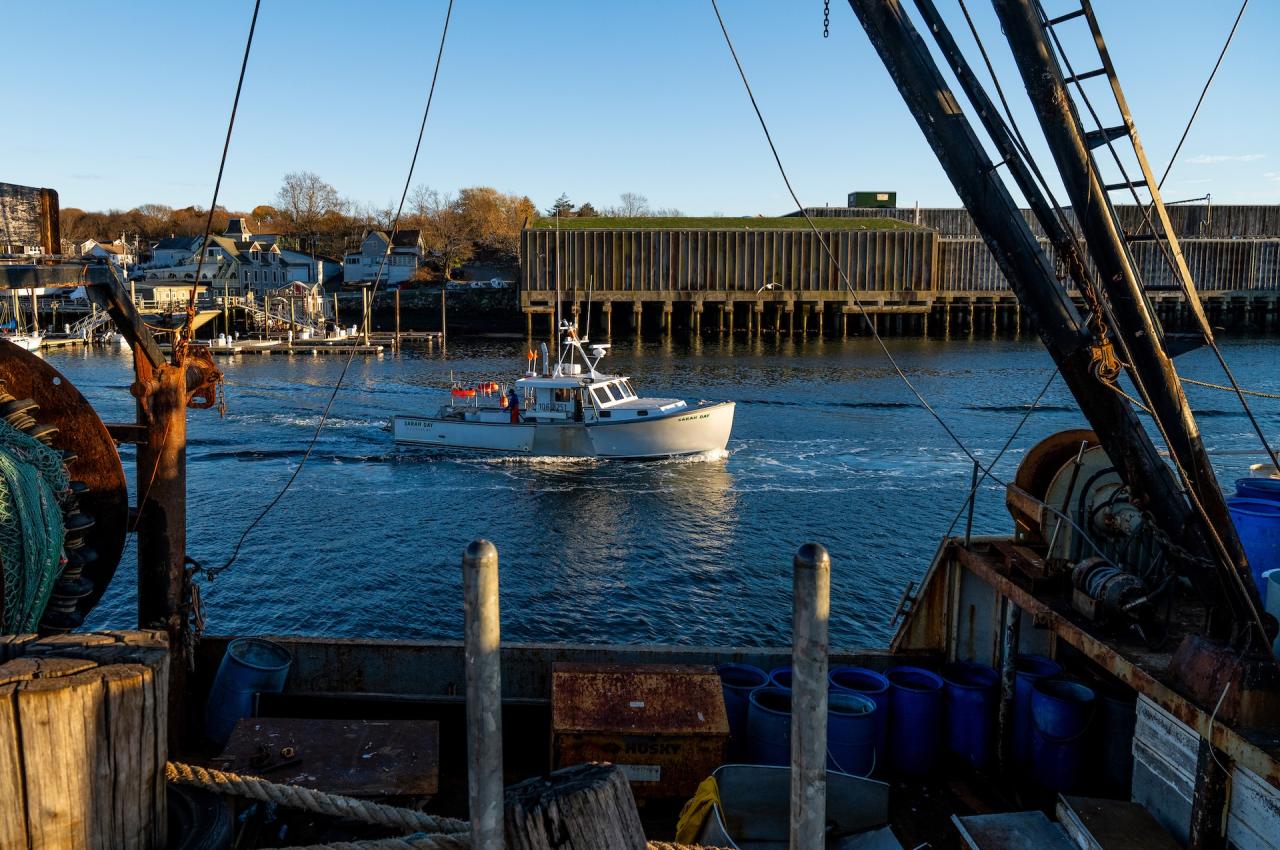In 1978, a Tufts Professor Began a Mission to Share Hiroshima’s Stories
On Memorial Day in 1978, Tadatoshi Akiba turned on the radio. A talk show host was taking calls about the attacks on Hiroshima and Nagasaki 33 years earlier, asking listeners whether the use of atomic bombs had been justified.
Caller after caller said yes, with responses like: “The attack on Pearl Harbor came first.” “Kamikaze pilots were worse than the bombs.” “More lives would have been lost if the bombs hadn’t been dropped.”
Akiba, then an associate professor of mathematics at Tufts, turned off the radio in stunned silence.
That moment marked a turning point, as Akiba recalled a year later in an article in the Tufts Criterion magazine. Though he had long reflected on his own childhood memories of war—of bombs falling and nights spent in Tokyo air-raid shelters—he now realized that many Americans had never grappled with the devastation that the war had wrought in faraway places. The atomic bomb, in particular, was something they debated, but not something they could viscerally understand.
“Here was a question that concerned the deepest human experiences and sufferings, but the answers were not addressed to these experiences at all,” Akiba later wrote in an article for the publication Our World. Those radio callers, he believed, lacked a real understanding of the destruction the bombings had caused. If only they could hear directly from the survivors—the hibakusha, as they are known in Japan—they might hear stories that could open their eyes to the human cost of the bombs.
Tadatoshi Akiba at Tufts University in the 1980s. Photo: Tufts Archival Research Center
Akiba made it his mission to enable the imparting of those stories. In 1979, he launched the Hibakusha Travel Grant for American Journalists, a program that ran for nearly a decade and that brought reporters from local and regional newspapers to Japan to meet with atomic bomb survivors. Today, as the world marks 80 years since the bombings, the program remains a model of what it means to bear witness across borders and to build peace and understanding through story.
Personal Memory to Public Mission
Born in Hiroshima in 1942 and raised in Tokyo during the war, Akiba had gut-wrenching memories of the war’s violence. His father had survived the Hiroshima bombing, though his family rarely spoke of it. But while studying in the United States—he earned his Ph.D. from MIT in 1970—Akiba found that his attempts to tell American friends about what happened during the war were largely unsuccessful.
Akiba “made modest efforts to tell people around [him] about the hibakusha,” as he later recalled, “but again I seemed to run into a thick wall.” He came to believe that the true impact of the bombings couldn’t be understood through facts alone.
What might bridge that understanding for U.S. audiences, he believed, was firsthand reporting: not from major media outlets with far-flung audiences, but from local journalists trusted by their communities and capable of translating what they could witness in Japan into stories that Americans would read and remember. The radio show he listened to in 1978 helped him turn his ideas into action; after hearing it, he knew it was time to do something.
In 1979, with support from the Hiroshima International Cultural Foundation, the Hiroshima-based Chugoku Shimbun newspaper, and the Japan-U.S. Friendship Commission, Akiba launched the Hibakusha Travel Grant. The first grant recipients—three journalists from Colorado, Montana, and Texas—traveled to Japan that summer. The program covered airfare, accommodations, and interpreters, allowing participants to focus fully on their reporting.
Over the course of their trip, the journalists interviewed survivors (hibakusha) in both Hiroshima and Nagasaki, attended memorial ceremonies, visited schools and hospitals, and spoke with peace activists. Their dispatches, often accompanied by striking photographs and deeply personal reflections, appeared in their hometown newspapers.
While many of those articles are hard to locate today, Akiba noted in a 1979 report that the project had succeeded in sparking conversation in parts of the United States where the bombings were rarely discussed outside of a military or strategic frame. “Our goal of reaching many Americans through good local newspaper articles written from a human perspective has been achieved,” Akiba wrote in the report.
Akiba emphasized the potential of such stories to shift perspectives—not only about the past, but about the responsibilities of global citizenship. “More needs to be done to encourage people to think in terms of all people of the world when important questions must be answered, rather than in terms of every American or of every Japanese,” he wrote. “The solution to many of our present problems is dependent on our ability to adopt this more global perspective.”
Several of the grant recipients continued writing about nuclear issues for years after their return, often citing the experience as transformative. The impact of their work demonstrated that even small, local stories could reverberate far beyond their place of publication, opening eyes, challenging assumptions, and building bridges across great distances. Some grant recipients returned to Japan later in their careers. Others reported that their readers had never seen stories like these before, narratives that treated Hiroshima and Nagasaki not as a political abstraction but as a lived human experience.
More Than Reporting
The hibakusha whom the journalists encountered had lived for more than three decades with the consequences of the atomic bombings. Many had lost parents, siblings, or children to the bombings. Some bore visible scars. Others lived with internal injuries, radiation-linked illnesses, or lifelong discrimination. Their stories not only fueled the journalists’ reports but also had profound personal effects on the grant recipients.
Diana Roose, who traveled to Japan as part of the program in 1982 and who in 2007 published a book called Teach Us to Live: Stories from Hiroshima and Nagasaki, was inspired by the hibakusha she met who had turned their suffering into a force for positive change.
In a 2013 interview with the Chugoku Shimbun newspaper, Roose said, “So many of the hibakusha have dedicated their lives to peace … they’ve dedicated their lives to something in a way that most people in the United States don't do. I think that meeting [them] helped me realize that was something I could do … Many of the hibakusha have been working as storytellers in schools with children. I have been doing some of that, too.”
Joseph Copeland, another grant recipient from the 1980s, recalled interviewing a woman who had lost her parents in the bombing. “She was 5 or 6 when the bombing occurred. Her mother was killed that day, and her father died of radiation poisoning,” Copeland told the Chugoku Shimbun in 2013. “The story was overwhelming. Both the interpreter and I were literally crying listening to it, which I've never done as a reporter in my life.”
For another grant recipient Dick Moody, the experience was literally life-changing. “Three years after [I went to Japan], I quit being a reporter and moved into a job in education because I didn’t want to report about policy anymore,” he said in a 2013 interview with the Chugoku Shimbun. “I wanted to affect policy.”
In the years that followed, Moody helped shape peace education initiatives in the state of Washington, an effort, he said, driven by one question: “How do we make sure we don’t repeat the error?” That question was inspired by the inscription found in Hiroshima’s Peace Memorial Park: “Let all the souls here rest in peace, for we shall not repeat the error.”
Recognition and Renewed Relevance
The grant program ran for 10 years under the auspices of the Hiroshima Peace Culture Foundation, with funding from Japanese media and international cultural organizations. Altogether, 34 American journalists participated, with survivors, interpreters, and local guides donating their time to the initiative.
Akiba, who remained closely involved with the program throughout its decade-long run, left Tufts in 1986 and returned to Japan, where he later served in the Japanese House of Representatives and, from 1999 to 2011, as mayor of Hiroshima. He used his public platform to advocate for nuclear abolition and to support hibakusha organizations such as Nihon Hidankyo. The group was part of the International Campaign to Abolish Nuclear Weapons, which received the Nobel Peace Prize in 2017. And in 2024, Nihon Hidankyo was itself awarded the Nobel Peace Prize for its decades of testimony and activism.
Today, fewer than 100,000 hibakusha are still alive. Many of the journalists who traveled to Japan in the early years of the grant have also retired or passed away. But the legacy of their stories and their storytelling remains in archives, newsprint, and stories that continue to surface in classrooms and public forums.
As the threats posed by nuclear weapons resurface in the news, Akiba’s project feels newly relevant. The Hibakusha Travel Grant asked Americans to consider the bombings not from a distance, but from the inside out. It offered no policy, only proximity. In doing so, it created something rare in the landscape of war and politics: the possibility of understanding, one story at a time.



